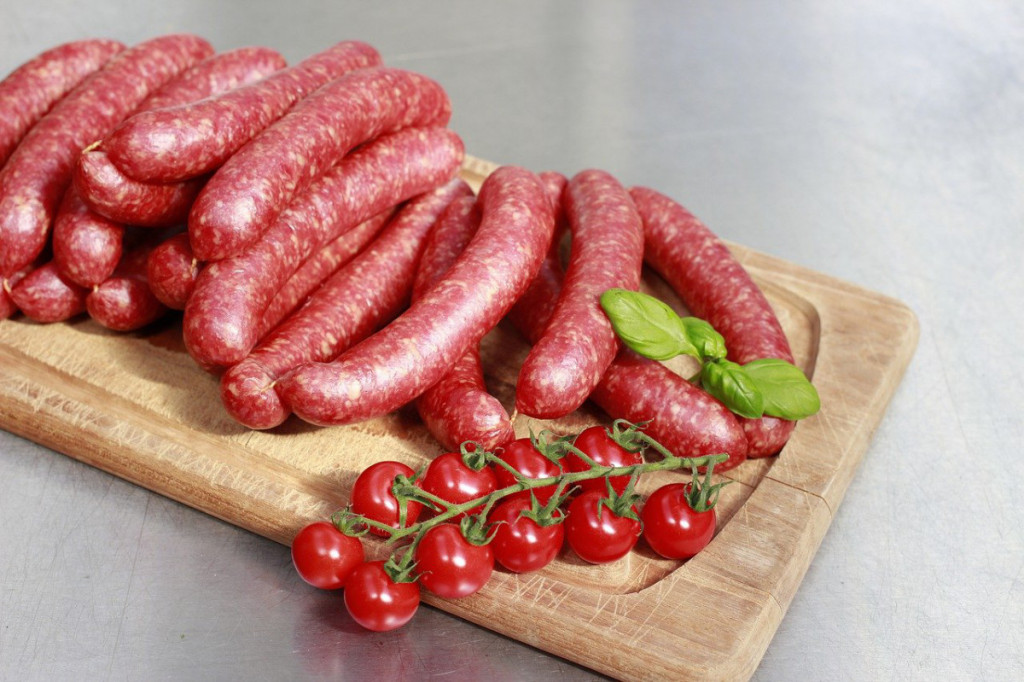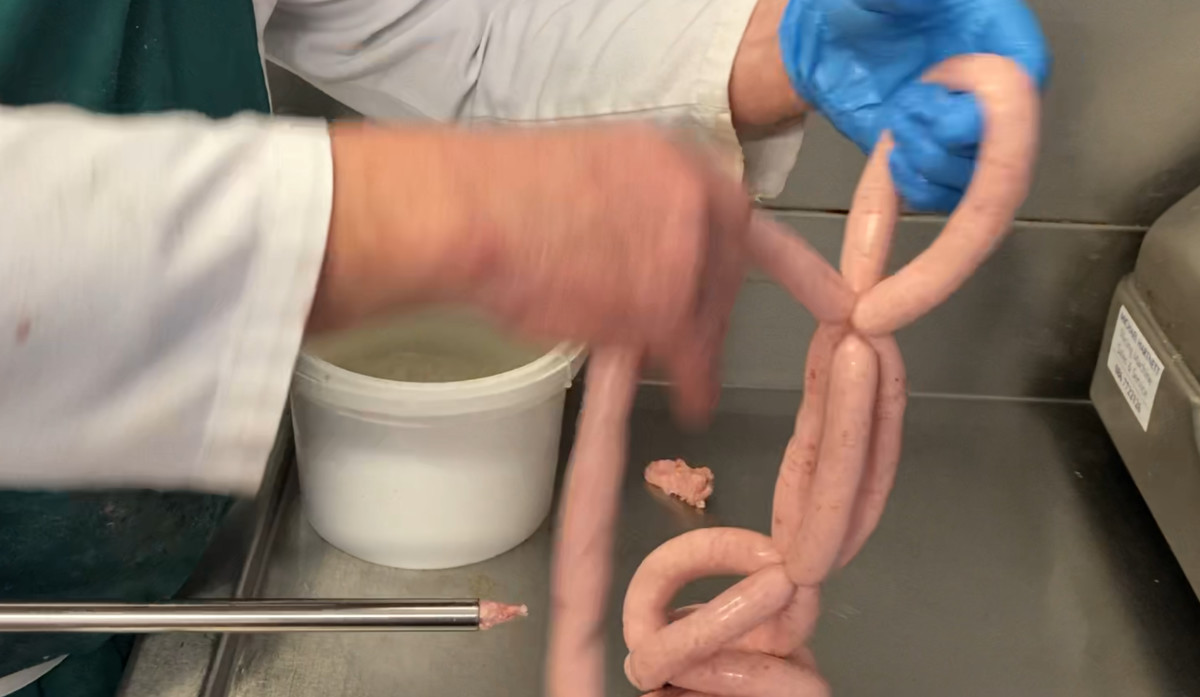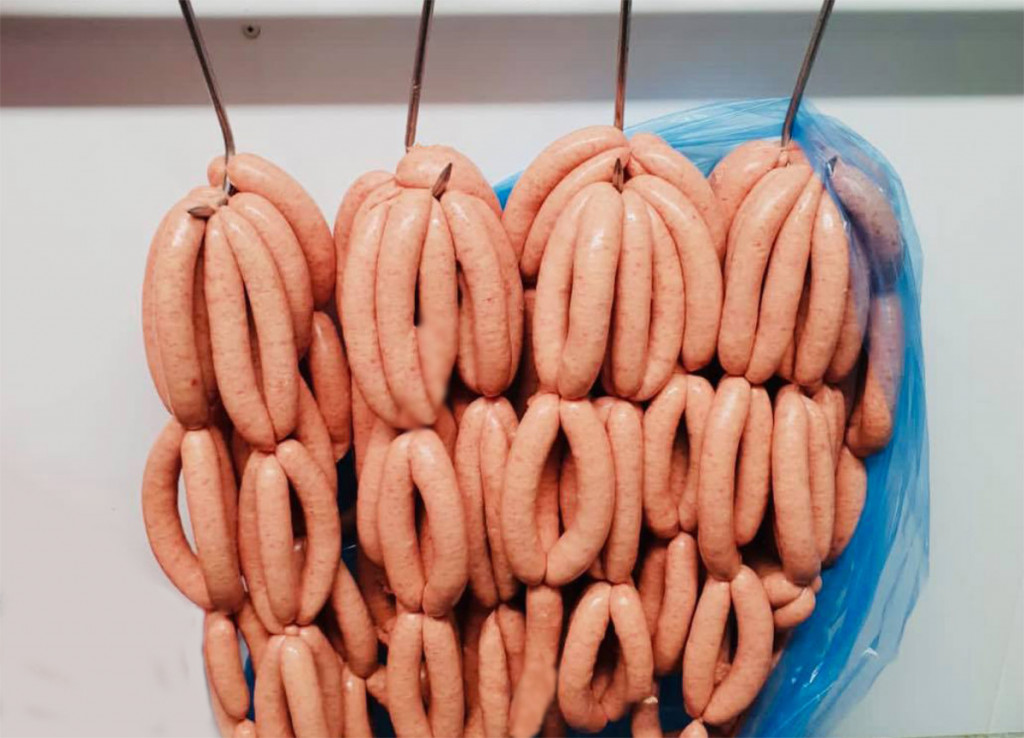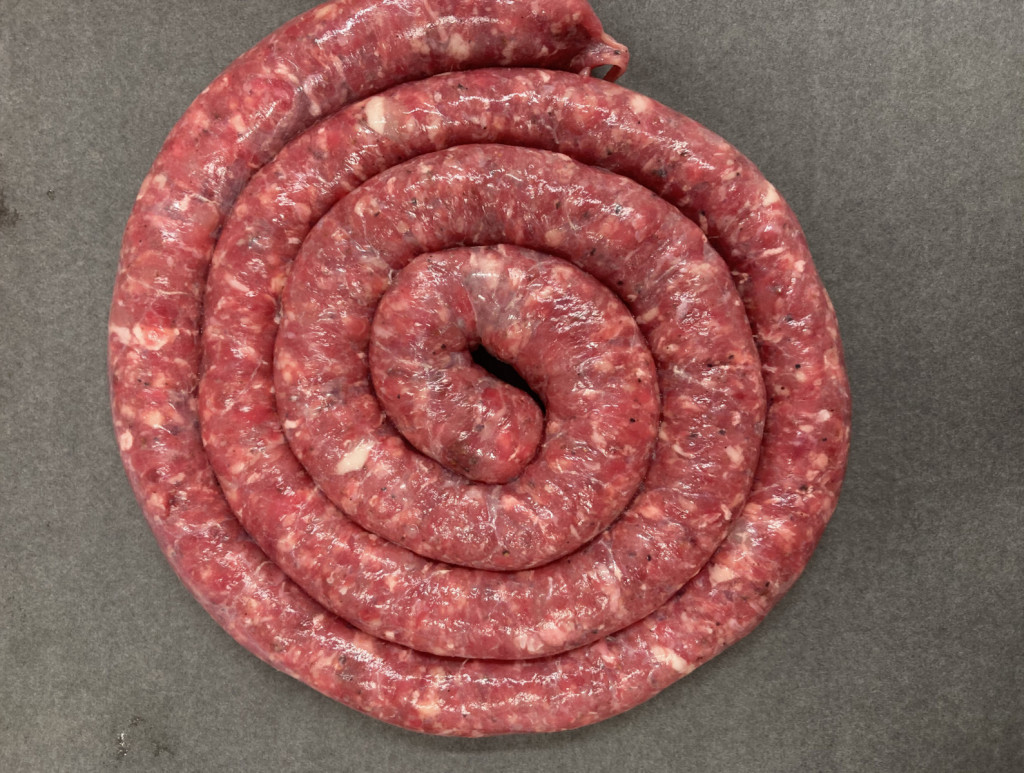
Someone once said, “Sausages and laws are alike. You don’t want to see them being made”. Now whether it was my fellow Dubliner, Oscar Wilde, or Otto von Bismarck who said it, it tells us a lot about the inferior quality of sausage ingredients at that time.
Yes, there was a time when poor quality meats and spices were added to make a cheap product for mass consumption, but nowadays lovers of authentic food are searching out quality artisan small-batch sausages and eschewing the industrially processed supermarket offerings. To this day, many cheaper sausages contain meat slurry or mechanically recovered meat, which by law must be declared on the packaging.
Back before refrigerators, people had to find a way to preserve meat that would spoil fairly quickly. The magic ingredient was salt.
And that’s where the word sausage comes from. The French word saucisse comes from the Latin salsica, which in turn comes from salsicus (seasoned with salt).
They cleaned animal intestines and stomachs and salted them, then stuffed them with chopped, salted meat. Different flavors were added, and they developed the thousands of sausage recipes you can now find worldwide.

Sausage making is a blend of art and science, requiring a good nose and taste buds and an ability to select excellent quality meat appropriate to the type of sausage being made.
Knowing the parts of an animal to use for a particular sausage is an essential skill and understanding the ratios of meat, fat, and spice with each other sets the master apart from the apprentice.
Making sausages, on the surface, is easy.
Done. Sausages made.

If only it were so simple, everybody would make their own sausages.

You may have heard sausages referred to as “bangers”. This is common in the UK where, during WW2, meat was severely rationed. Butchers added a rusk and water to their ration of meat as an extender, and the water was soaked up by the rusk. When these sausages were frying on the pan, they burst loudly, earning their common sobriquet.

To make what we will call a breakfast sausage the typical composition would be:
The type of pork you use is important. Shoulder is best, followed by belly, because both cuts have enough connective tissue to add body to the finished sausage.
Let me tell you a story to illustrate a point about sausage making.
A butcher I know had won many awards for his sausages and I had tasted them many times. After one competition, in which he came second, I mentioned the sausages differed from previous events. He denied this and said they were the same. When I persisted, he admitted that he had used loin of pork because he had no shoulder meat available. So the sausage had the same spice as previously, but a different pork muscle. And so he came second. Now, I relate this story, not to tell you how clever I am, but to show that, while loin pork is a premium product, it is not the best ingredient for sausage.
Because it lacks the connective tissue and fat that the shoulder has in abundance. And that was what was missing from the runner-up sausage.
The loin of pork is almost pure lean meat, and it gave a bland texture to the sausage. The pork shoulder has fat and connective tissue in the right quantities to give a sausage the right texture, the right mouth-feel that makes it a winner.
Knowing the cuts of pork (or beef, or lamb) to use in sausage is crucial. Knowing the spices to use for the different meats is important, too. Getting the right blend of meat, fat, spice and using the right casing is where the skill comes in.
Of course, using the right quality of meat gives a serious advantage. We are talking about artisan sausages here, not the dumping ground for off-cuts and stale spices used in cheap industrial sausage making.

I can’t emphasize the importance of temperature enough. Everything has to be cold, very cold.
Put meat and fat in the freezer for an hour before you begin.
Put the parts of your grinder (mincer) and stuffer into the freezer for an hour before you start processing.
Don’t leave the meat out of refrigeration any longer than it takes to make your sausages. Use iced water always. As soon as you make your sausages, put them in the fridge. Hang them if possible, hanging gives the classic sausage shape. Leave them in the fridge overnight to allow the flavors to infuse and if you are not going to use them all immediately, wrap them properly and freeze. Use freezer-grade paper to protect the sausages in the freezer. Light plastic bags are too thin.
Grinding and mixing are important parts of sausage making. It is important that the ingredients are properly mixed, but bear in mind that grinding too finely and over-mixing can ruin a good sausage mixture. The mixing process draws out the protein strings that bind the sausage mix, and if you over-mix or grind too many times, you end up with a very dense sausage.

We can make sausages from any meat, beef, lamb, pork, chicken, turkey, venison, etc. You can even make vegetarian sausages, but why you would want to is beyond me. Each type of meat needs a particular blend of spices to bring out and enhance the flavours of the particular meat. There are national, regional and individual recipes and of course, you are free to come up with your own sausage recipe. Venison tends to be very lean so some fat could be used to bind and add moisture.
Then there are varieties such as fresh sausage, fermented sausage, blood sausage (in Ireland and the UK we call that Black Pudding) and sausages without casings, square sausage, and so on. Infinite variety is the name of the game.
Now some people disdain sausages because they contain fat. In my opinion, sausages without fat are useless. A good sausage needs at least 20% fat for texture, flavour, and moisture.
To make a superb sausage, choose the best quality meat to start with. Buy good quality spices that are fresh and dry. Chill the meat down to just above freezing and use iced water if it is part of the ingredients. Make your sausages quickly while maintaining the cold chain. Some sausage mixes break up if the temperature of the meat goes above a certain level during manufacture. The type of fat used is also important, back fat being the best. Leaf lard, or flare fat has a lower melting point than back fat and can become greasy when cooked, so I never use it for sausage making. It is excellent for making lard, so don’t discard it. As I mentioned, shoulder pork is ideal, but so is belly pork. However, belly pork is a popular consumer item and is more expensive than the shoulder.

Lamb casings are best, although you can buy manufactured casings made from beef collagen. They are easier to work with, but I think the natural casing gives a better sausage.
Lamb casings are sold salted and they have a long shelf life. Before you start, take a length of casing and soak for 10 minutes in lukewarm water. This will remove the salt and loosen the casings, making them easier to fill. You could if you wanted, run cold freshwater through the casings before you use them, although I have never done that and my sausages have all been fine.
So, you have all your ingredients ready, your pork and water are at the optimum temperature, you are ready to begin.


ALTRA Electric Meat Grinder, 3-IN-1 Multi-Use Meat Mincer & Sausage Stuffer Check Price on Amazon
A grinder (mincer) is an essential piece of kit to create the right consistency for your sausages. Mince (grind) the pork and add the dry ingredients. Add water, if using, and mix well. This can be done by hand if using small quantities. Don’t over mix. If you pick up some of the paste and turn your hand over with the palm open and the sausage mix slowly falls away, you have the mix just right.
Fry a small ball of the sausage meat to test for seasoning before you fill the casings. Remember that the flavors will develop overnight, so don’t over-season the mix.

Sausage Stuffer Horizontal Kitchen Machine – Aluminum Meat Stuffing Maker Kit Check Price on Amazon
You will need a filler (stuffer) to pack into casings. Some food mixers have attachments to fill sausages, but if you are going to do any kind of quantity of sausage regularly, I suggest you buy a filler. Hand-operated fillers are available and they can make sausage making a lot easier. Fill the stuffer with the ground meat that you have added your seasonings to. Push the paste in tightly to eliminate any air pockets. Wet the nozzle, then thread the casing over the nozzle, making sure there is no air in the casing.

It is best to have someone turn the handle while you fill the sausage. You will need both hands to control the casing. Fill the sausage casing by allowing the flow of sausage meat to pull the casing from the nozzle, holding it gently with your fingers on the nozzle so it doesn’t all run off at once, avoiding air bubbles, and when all casings are full, create the links.
This is not as difficult as it seems, just pinch the casing at 4-inch intervals and twist. Create a loop and thread the next piece through the loop. Twist and pinch and repeat. I have slowed down the video of the linking process so you can see exactly how it is done. If you can, hang the sausages in a fridge overnight. The reasons for this are twofold: the flavorings need time to develop in the meat, and the sausages will take their characteristic shape while hanging. If you can’t hang the sausages, don’t worry, but refrigerate them overnight before cooking or freezing.

Be adventurous. You are making the sausages for yourself, so add the ingredients you like. Make them as spicy or as bland as you like. Long or short. Linked or spiral.
Another tip for you; if you pack the sausage meat tightly into the stuffer, making sure there are no air pockets, there is no need to prick the sausages. I’ve made a lot of sausage over 40 years and never pricked any of them. In fact, pricking sausages allows fat and moisture to escape and you can end up with a dry sausage.

Making your own sausages at home gives you the freedom to experiment with flavors. Anything goes, but be sure to work scrupulously clean and keep the temperature of ingredients very low. Freeze meat and equipment for half an hour before you begin and use iced water where required.
Here’s a really old recipe from a book I came across many years ago.
*usage rate 30g per kg of meat content
Method:
Feel free to experiment with flavorings, but make any trial sausages in small quantities, in case you are not happy with the results. When trying out a new seasoning mix, when the mixing is complete, take a small ball of meat, flatten it and fry it in a pan. Taste the seasoning and if you are pleased with the result, go ahead and fill the casings. Remember the flavors will develop overnight, so don’t over spice until you are sure of what you are doing.

Here’s a recipe that’s very Dublin-specific. It’s a bit like Marmite, you either love it or hate it.
This is a traditional Dublin recipe. Touted as a hangover cure, Jonathan Swift mentioned it as funeral food. Probably because if there were any delays in the burial, the coddle wouldn’t spoil by simmering for another hour or two. Also enjoyed by Sean O’Casey and James Joyce who mention it in their writings.
Dublin Coddle for 4-6 people
Ingredients:
Method:
(recipe from irishcentral.com)
Recipe suggestion: Before cooking, run cold water over the sausages and with the point of a sharp knife, slit the casings lengthways. The sausage meat will come out cleanly. Roll sausage meat into small balls and add to the pot.
Bain taitneamh as do bhéile. (Irish for Bon appétit)